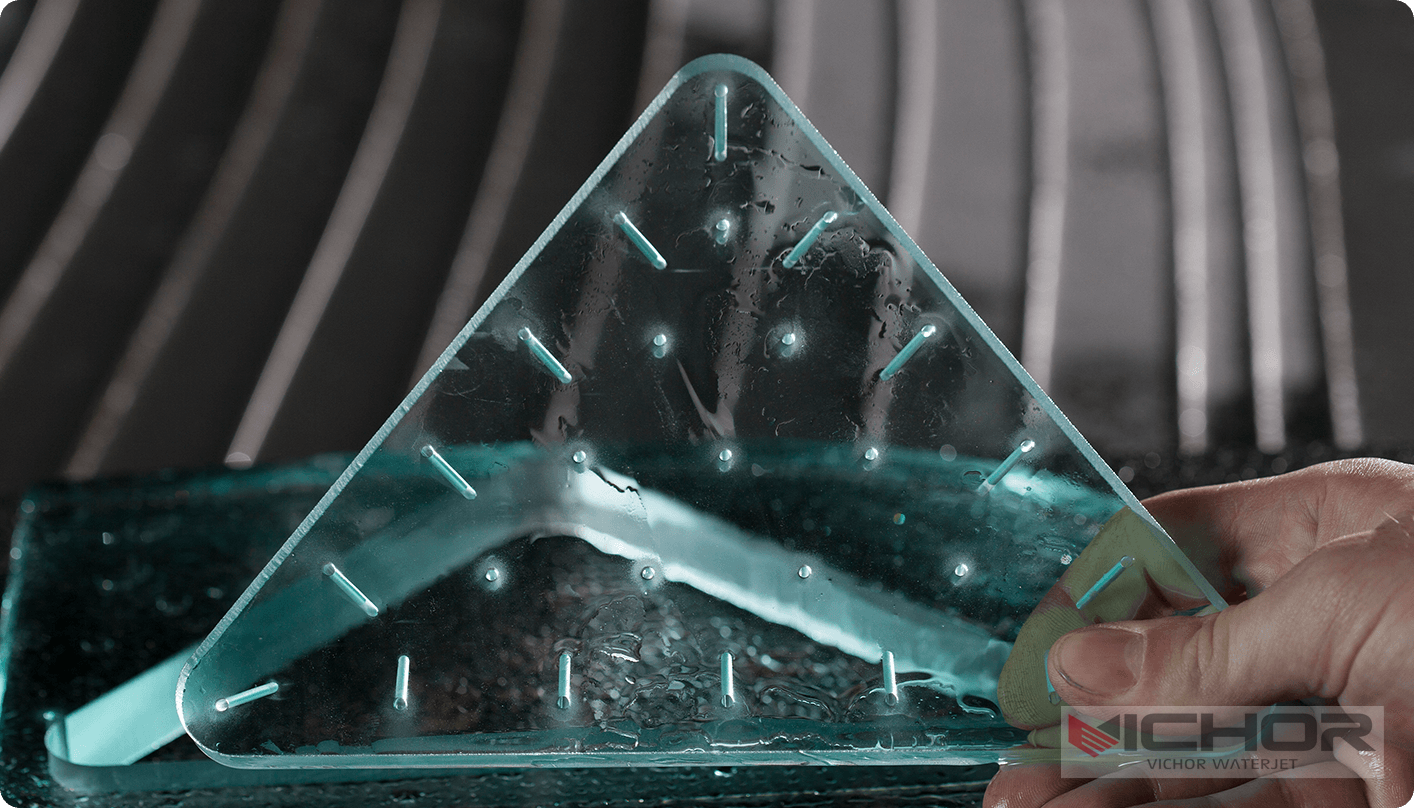
The Ultimate Guide to 4x4 Water Jet Cutting: Costs, Applications, and How to Choose the Right Machine
When it comes to precision cutting in various industries, the 4×4 water jet has become a game-changer. This versatile tool uses high-pressure water, often mixed with abrasives, to slice through materials with incredible accuracy. Whether you’re in manufacturing, construction, or creative arts, understanding the ins and outs of a 4×4 water jet can help you make informed decisions for your projects. In this comprehensive guide, we’ll dive into the core aspects of 4×4 water jet technology, compare it with other methods, explore its applications, and provide practical tips for selecting suppliers and managing costs. By the end, you’ll have a solid grasp of why this equipment is so popular and how to leverage it effectively.
What Is a 4×4 Water Jet and How Does It Compare to Other Cutting Methods?
A 4×4 water jet refers to a water jet cutting machine with a standard cutting bed size of 4 feet by 4 feet, making it ideal for small to medium-sized projects. This system operates by forcing water through a narrow nozzle at extremely high pressures—often exceeding 60,000 psi—to cut materials like metal, stone, glass, and composites. The addition of abrasive substances, such as garnet, enhances its ability to handle tougher materials. One of the key advantages of a 4×4 water jet is its cold-cutting process, which eliminates heat-affected zones (HAZ) that can compromise material integrity in methods like laser or plasma cutting.
When comparing the 4×4 water jet to other technologies, several factors stand out. For instance, laser cutting is excellent for speed and precision in thin materials but struggles with reflective surfaces or thick metals. Plasma cutting, on the other hand, is cost-effective for conductive metals but produces significant heat and slag. In contrast, the 4×4 water jet offers versatility across a wide range of materials and thicknesses, without thermal distortion. This makes it a preferred choice for industries requiring intricate designs or sensitive materials. Moreover, the environmental impact is lower, as it doesn’t emit harmful fumes, though it does consume water and abrasives. Overall, the 4×4 water jet shines in applications where precision, material diversity, and minimal waste are priorities.
Applications of 4×4 Water Jet Technology and a Guide to Selecting the Right Model
The applications of a 4×4 water jet are vast and span multiple sectors. In the automotive industry, it’s used for cutting gaskets, interior components, and custom parts with tight tolerances. Architects and designers rely on it for crafting detailed patterns in stone, tile, or glass for buildings and artworks. Additionally, the aerospace sector benefits from its ability to handle composites and alloys without inducing stress cracks. Even in the food industry, specialized 4×4 water jet systems can cut products like pastries or frozen foods hygienically. This breadth of use highlights the adaptability of water jet technology, especially in a 4×4 format that suits prototyping, small-batch production, and educational setups.
Selecting the right 4×4 water jet involves considering several factors. First, assess your material types and thicknesses—softer materials might only require pure water jets, while metals need abrasive models. Next, evaluate the machine’s precision and speed; look for features like CNC controls and high-pressure pumps that ensure consistent results. The size of the 4×4 bed is perfect for limited spaces, but if you anticipate larger projects, you might explore expandable options. Also, consider maintenance needs and operator training; a user-friendly 4×4 water jet with good support can reduce downtime. Finally, budget plays a role—entry-level models are available for hobbyists, while industrial-grade systems offer enhanced durability. By matching these aspects to your specific needs, you can invest in a 4×4 water jet that maximizes efficiency and ROI.
Finding Reliable 4×4 Water Jet Suppliers and Services
Navigating the market for 4×4 water jet suppliers requires a strategic approach to ensure quality and reliability. Start by researching manufacturers and distributors with strong reputations in the industry; online reviews, trade shows, and industry forums can provide valuable insights. Look for suppliers who offer comprehensive services, including installation, training, and after-sales support. This is crucial because a 4×4 water jet is a significant investment, and proper setup can prevent operational issues. Additionally, consider local suppliers for faster service and reduced shipping costs, but don’t hesitate to explore global options if they provide better technology or pricing.
When evaluating potential partners, ask about their experience with 4×4 water jet systems and request case studies or references. A good supplier should demonstrate expertise in your specific application area, whether it’s metal fabrication or artistic design. Also, inquire about warranty terms and availability of spare parts—this can save you from prolonged downtime. Another tip is to seek suppliers who offer customization options, as a tailored 4×4 water jet might better suit your unique requirements. By taking these steps, you can build a relationship with a trusted provider who will support your business growth and help you get the most out of your 4×4 water jet equipment.
Understanding the Costs and Pricing Factors of a 4×4 Water Jet
The cost of a 4×4 water jet can vary widely based on several factors, typically ranging from $50,000 to $150,000 or more for full systems. Key elements influencing price include the pump type—direct-drive pumps are more affordable but less durable than intensifier pumps, which offer higher pressure and longevity. The inclusion of abrasive delivery systems, CNC controls, and software also adds to the expense. For instance, a basic 4×4 water jet might cover essential functions, while advanced models with automation features command premium prices. Additionally, operational costs like water consumption, abrasive materials, and electricity must be factored in; these can add thousands annually, depending on usage.
To manage expenses, consider both initial investment and long-term value. Leasing options might be available for those on a tight budget, spreading costs over time. It’s also wise to compare quotes from multiple suppliers and negotiate bundled services, such as training or maintenance packages. Remember, a cheaper 4×4 water jet might lead to higher repair costs, so prioritize quality and reliability. Furthermore, the versatility of a 4×4 water jet can offset costs by reducing the need for multiple machines. By analyzing your production volume and material requirements, you can estimate the payback period and make a cost-effective decision that aligns with your financial goals.
Deep Dive into the Technology and Process Behind 4×4 Water Jet Cutting
The technology behind a 4×4 water jet is rooted in high-pressure fluid dynamics, where water is pressurized by a pump and forced through a small orifice, creating a supersonic stream. In abrasive 4×4 water jet systems, garnet or similar materials are mixed in to enhance cutting power, allowing the jet to slice through hard substances like titanium or granite with ease. The process is controlled by CNC software, which guides the nozzle along predefined paths for precise shapes and patterns. One of the standout features is the omni-directional cutting capability, meaning the 4×4 water jet can handle complex geometries without tool changes, reducing setup time.
From a technical perspective, the quality of a cut from a 4×4 water jet depends on factors like pressure, traverse speed, and abrasive flow rate. Higher pressures result in cleaner edges but may increase wear on components. The 4×4 bed size limits the workpiece dimensions, but it allows for efficient use of space and easier material handling. Innovations in this field include quieter pumps, improved filtration systems to recycle water, and software enhancements for better accuracy. Understanding these technical details can help operators optimize their 4×4 water jet for specific tasks, ensuring consistent performance and extending the machine’s lifespan through proper maintenance.
Frequently Asked Questions About 4×4 Water Jet Systems
Q1: What materials can a 4×4 water jet cut effectively?
A1: A 4×4 water jet is highly versatile and can cut a wide range of materials, including metals like steel and aluminum, stones such as marble and granite, composites, glass, rubber, and plastics. The key is adjusting parameters like pressure and abrasive use to suit each material’s hardness and thickness.
Q2: How does the operating cost of a 4×4 water jet compare to other cutting methods?
A2: Operating costs for a 4×4 water jet are generally moderate but can be higher than plasma cutting for metals due to abrasive and water consumption. However, it often proves more economical than laser cutting for thick or diverse materials, as it avoids costly gas and maintenance associated with heat-based systems.
Q3: What maintenance is required for a 4×4 water jet machine?
A3: Regular maintenance for a 4×4 water jet includes inspecting and replacing nozzles and seals, cleaning the abrasive delivery system, and checking high-pressure components for wear. It’s also important to monitor water quality and filters to prevent clogs and ensure consistent performance.
Q4: Can a 4×4 water jet be used for underwater cutting?
A4: Yes, many 4×4 water jet systems support underwater cutting, which reduces noise and minimizes splashback. This is particularly useful for cutting materials that produce dust or debris, improving workplace safety and cleanliness.
Q5: Is training necessary to operate a 4×4 water jet, and how long does it take?
A5: Basic training is essential for safe and efficient operation of a 4×4 water jet, typically taking a few days to a week. This covers software programming, material handling, and maintenance procedures. Many suppliers offer training as part of the purchase package to help users get started quickly.
continue reading
Related Posts
- 1461 words7.4 min read
- 1466 words7.4 min read




